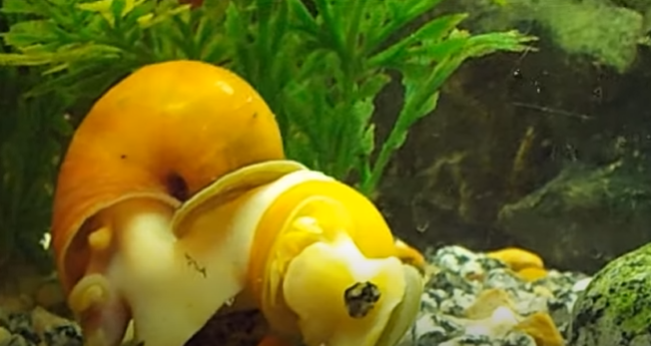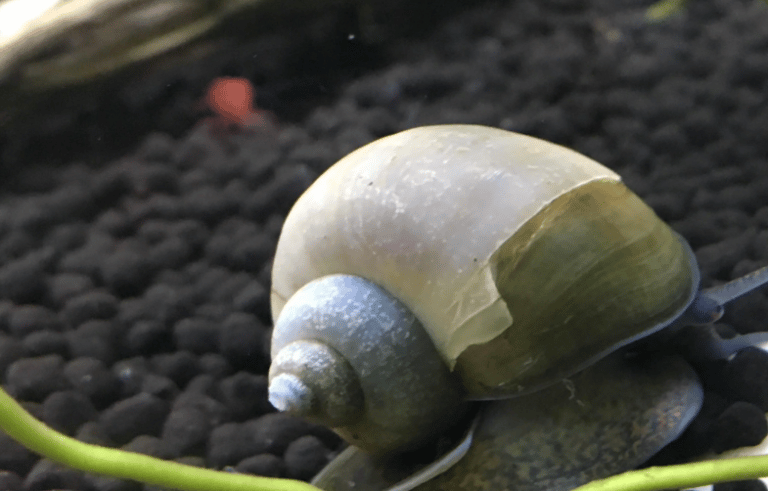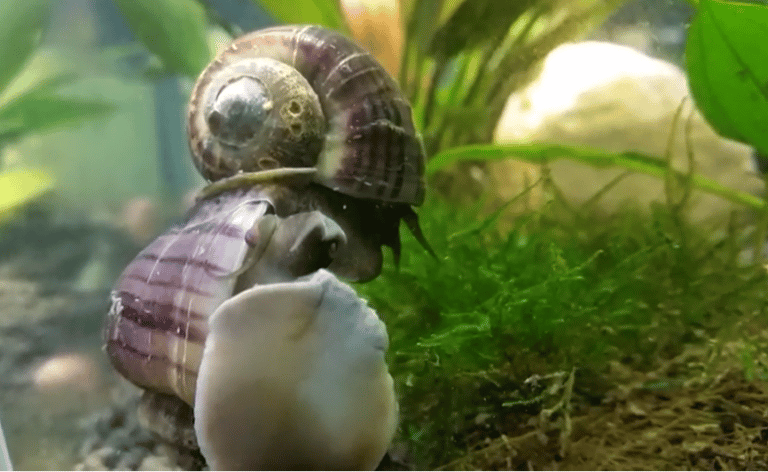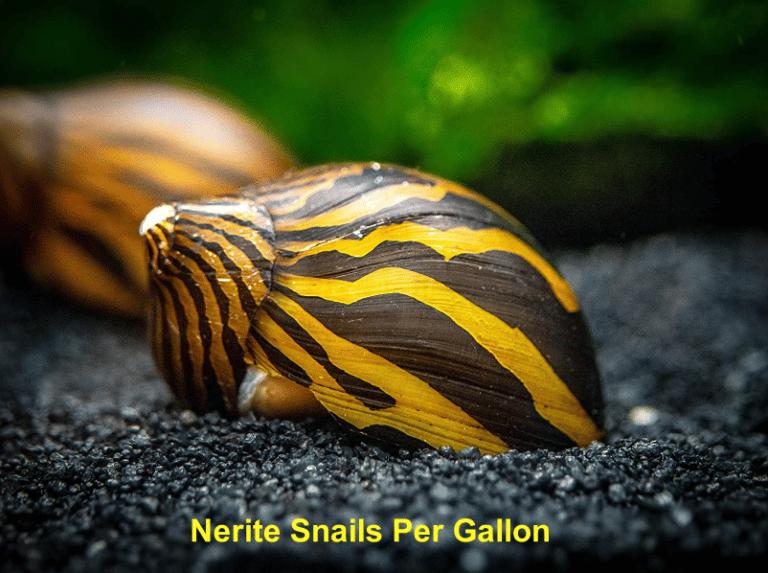Telling the difference between males and females is difficult since they can sometimes change their gender. However, a closer look at their physical appearance and behaviors will make the difference.
To summarize their difference, a male mystery snail has a penile sheath while the female doesn’t. Only the female appearance becomes translucent when breeding, and the males tend to climb on females while matting. Here is a table that will help you out:
| Male | Female |
| Penile sheath near gills. | No sheath next/near gills. |
| An opaque shell that never changes. | Translucent shell when breeding. |
| The male climbs on the female when mating | The female remains on the ground with the male on its back while mating |
| They hide in their shells while on top of a female. | Never hides in their shells when mating. Instead, they carry the males around until fertilization is over. |
Telling the difference is also important for reproduction. Unlike in other gastropods, which are hermaphrodites, mating in the mystery snails requires a male and female.
When mating, mystery snails are usually stuck together most of the time, with the male on top. The female mystery snail will lay eggs hatching several weeks after mating in about two to three weeks.
Male vs. female mystery snails
So, if you have been wondering why your mystery snails are not procreating, one of the reasons would be you are keeping the same gender. Below I have highlighted some major differences between a male and a female mystery snail.
1. Physical appearance
Mystery snails are stunning, especially because they come in various colors and spots, like blue, golden, black, purple, ivory white, and albino (white with brown stripes) shells. These colors cut across both genders.
Therefore, look for their shell’s transparency difference to spot it. Females tend to have translucent shells when they enter the breeding phase compared to males.
2. Penile sheath
Like all other animals, the male mystery snail has a penis but is not exposed. The penis of the mystery snail is located on the right side of its upper mantle cavity, next to the gills. This organ can only be spotted when it is out of its shell. Here is how you can notice it:
- Take the snail out of the tank and sit in a comfortable place with enough lighting (NOTE: mystery snails have lungs and breathe air, so getting them out of water for a short period will not harm it.)
- Hold it on its back between the thumb and forefinger and wait for it to come out of its shell.
- A mystery snail will only come out when it feels comfortable and safe, so you must exercise patience. There is nothing you can do to make it come out.
- When it comes out, pay close attention to its right shoulder. You will see two openings for a female mystery snail below each shoulder. The opening below the right shoulder is its sexual organ, while the one below its left shoulder is the gills.
- Male mystery snails have a penile sheath next to the gills. The sheath blocks the opening below the right shoulder. The male shell opening is rounder to accommodate the extension of the penis during mating.
3. Shell structure
The shell of a female mystery snail ready for breeding will always turn translucent. Although this observation is 100% correct, it is only accurate for ready-to-breed females and thus cannot be used to identify younger females or male mystery snails.
Also, some aquarists claim that a male mystery snail has its shell protruding outward while the female mystery snail has a smoother curve.
4. Color & Size
Although not scientifically backed, many aquarists claim that male mystery snails have brighter colors than females. Also, they say that the female mystery snail is always bigger than the male.
However, one cannot accurately differentiate between females and males based on size because they might vary. A mature mystery snail might also be bigger than the younger ones.

5. Differences in Behavior
You can also tell the gender of your mystery snails based on their behavior.
- Males climb over the female ones during mating. Even though males may accidentally climb on each other, it will not last as mating between males and females. Using this method to sex mystery snails is only effective if you have a male and female mystery snail.
- The female mystery snail will lay eggs about two to four weeks after mating. It lays eggs above the water, hatching in about two to three weeks.
Sexing mystery snails is not straightforward, and you will require time to be accurate. I have met people who claim that mystery snails are hermaphrodites because of switching their gender, but the fact is they are not.
A friend who had lived with a mystery snail for over three months which she thought was male, was surprised to find eggs that later hatched.
For accuracy purposes, you might need to check several times on diverse dates just in case they have switched genders. You should also ensure it is comfortable in its habitat by ensuring the pH of the water in the tank is at the recommended levels of 6.5 and 7.5.
Learn more about how to tell if mystery snail eggs are fertile.
Can Mystery Snails Change Their Gender?
Yes, mystery snails can change their gender, although the transition is not permanent and has nothing to do with mating. Some mystery snails can transition easily from one gender to another, while others take longer.
During the gender transition, the testis of the male mystery snail will shrink in size and darken in color. After transitioning, the mystery snail may take several hours or days to change back to its original gender. Below are some factors that can make a mystery snail change its sex.
- The environment – the mystery snail might feel the environment is uncomfortable or unsafe, which can trigger it to change its gender.
- Presence of chemicals in the water in the tank.
- The size of a mystery snail can also trigger it to change its gender.
References for this article include Wikipedia – Mating of gastropods, and the State of Wisconsin, Department of Natural Resources – Mystery Snail Monitoring Protocol.






